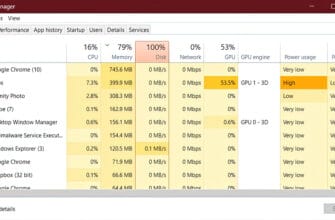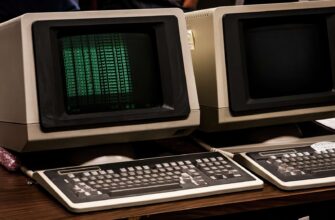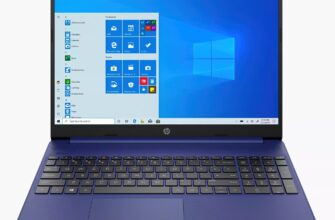There could be a few reasons why your computer is not connecting to wifi. The first thing you should check is whether or not the wifi router is turned on and working properly. Why computer is not connecting to wifi? If the device is fine, then the next thing to check is whether or not your computer’s wifi adapter is turned on and working properly.
If both the router and modem seem to be working fine, then the problem might be with your computer’s internet settings. Try resetting your internet settings and see if that fixes the problem.
There could be a number of reasons why your computer won’t connect to Wi-Fi. It could be that your Wi-Fi router is not working properly, or that your computer’s network settings are not configured correctly. If you’re not sure what the problem is, you can try restarting your computer and wifi adapter, or contacting your ISP for help.
Why is my laptop Wi-Fi card not working?
It could be that the drivers for the card are out of date, or that the card itself is damaged. Alternatively, there could be an issue with your computer’s BIOS settings. If you’re not sure what the problem is, you can try troubleshooting by resetting your router or checking for interference from other devices.
Why Won’t My Laptop Connect to WiFi?
It could be that your WiFi router is not working properly, or that there is something wrong with your laptop’s WiFi adapter. If you have recently installed any new software or hardware on your laptop, that could also be causing the problem. Try restarting your laptop and wi-fi modem, and if that doesn’t work, try resetting your router. If none of these solutions work, you may need to take your laptop to a computer repair shop to have it checked out.
Reasons
Your PC is in Airplane Mode
Your personal computer is in airplane mode when you want to use it during a flight. This is because the airplane mode turns off all wireless communication on your device, including Wi-Fi, cellular data, and Bluetooth. This can help prevent any interference with the plane’s electronic systems.
You’re not in range of a Wi-Fi network
If you’re not in range of a Wi-Fi network, you won’t be able to connect to the internet. Wi-Fi networks have a limited range, so if you’re not close enough to the router, you won’t be able to get a signal. You can try moving closer to the router, or connecting to a different Wi-Fi network.
Your Wi-Fi adapter needs to be reset
If your Wi-Fi adapter is not working properly, you may need to reset it. To do this, simply unplug the adapter from your computer and then plug it back in. If that doesn’t work, you can try restarting your computer. If you’re still having trouble, you may need to contact your ISP or router manufacturer for help.
Your Wi-Fi adapter isn’t working
First, check to see if the adapter is properly plugged into your computer. Next, try restarting your computer and router. If that doesn’t work, you may need to update the drivers for your Wi-Fi adapter. You can usually find the latest drivers on the manufacturer’s website.
Troubleshooting network problems in Windows
First, check to see if your network connection is working by opening the Control Panel and clicking on Network and Sharing Center. If your connection is not working, try restarting your computer or your router. If that does not work, you may need to check your firewall settings or contact your ISP for help.
Network troubleshooting on your device
First, check to see if your device is within range of the network. If it is, try restarting your device and then reconnecting to the network. If you’re still having trouble, try resetting your network settings. This can usually be done by going into your device’s settings menu and selecting the “Reset” option.
Solutions
Run network commands after using the Network Troubleshooter
If you’re having trouble connecting to a network, you can use the Network Troubleshooter to try and fix the problem. Once you’ve run, you can also try running some basic network commands to see if that helps. For example, you can try pinging a website to see if you can connect to it. If you’re still having trouble, you can try using a different DNS server or changing your network adapter settings.
This tool can help you identify and fix problems with your internet connection. To run the troubleshooter, go to the Control Panel and search for “troubleshoot”. Then, select the “Network and Internet” and follow the instructions.
Restart your modem and router
If your modem and router are not working properly, you may need to restart them. To do this, simply turn off both devices and then turn them back on again. This should fix the problem and allow you to connect to the internet properly.
Check your network settings
If you’re using a Wi-Fi connection, make sure your network adapter’s power saving mode is disabled. Also, check that your router’s firmware is up to date. This can be done through your router’s web interface. Try to connect your adapter.
Check for Windows updates
Windows 10 automatically installs updates in the background, but there might be an optional update that isn’t installed yet. To check and install any available updates, do the following:
Click Start and then select Settings > Update & Security > Windows Update. Click Check for updates to see what updates are available for your computer. If any updates are found, click Install now to install them on your computer. Restart your computer when prompted to do so. After installing the updates, try opening Microsoft Edge again and see if it works as expected.
Internet service provider issues
I have been having issues with my internet service provider lately. My connection has been spotty and unreliable, and it’s been frustrating trying to work or do anything online. I contacted customer service and they said they would send a technician out, but so far nothing has changed. I’m not sure what the problem is, but it’s really starting to interfere with my life. I hope that something can be done soon, because this is really starting to be a pain.
Update the Network Adapter Driver
If you’re experiencing network problems, one potential solution is to update the driver for your network adapter. This can be done through the Device Manager in Windows. First, open the Device Manager, find the network adapter in the list of devices, right-click on it, and select “Update Driver Software.” If there’s an updated driver available, follow the prompts to install it.
Disable IPv6 Settings
One way to disable IPv6 settings is to go to the Network and Sharing Center, click on Change adapter settings, right-click on your network connection, and select Properties. Under the Networking tab, clear the checkbox next to Internet Protocol Version 6 (TCP/IPv6). Click OK to save your changes.
Disable Windows Firewall
If you’re not using a third-party firewall, Windows Firewall is the best way to help protect your PC. When you disable it, your computer becomes vulnerable to attacks.
Reinstall the Wi-Fi Driver
This will delete the current driver and allow you to install a fresh copy. To do this, go to the Device Manager, find the listing for your Wi-Fi adapter, right-click on it, and select Uninstall. Reboot your computer and then head to the website of your adapter’s manufacturer to download the latest driver.
Move Router Closer to PC
If your computer is having trouble connecting to your wireless adapter, one possible solution is to move the router closer to the computer. This will help to ensure that the signal between the two devices is strong enough for a reliable connection. You may also need to adjust the router’s antennae to get a better signal.
Read more:






